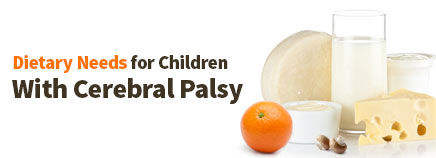
Kids with cerebral palsy (CP) have problems with their muscle tone, movement, and/or motor skills. This can make mealtimes challenging.
Some kids may not have the coordination to feed themselves or chew and swallow safely or successfully. Digestive problems like gastroesophageal reflux and constipation can make eating uncomfortable. All of this can make it hard for kids to get enough to eat — and that can lead to poor growth or malnutrition.
But with the right diet and feeding techniques, many kids with CP can learn to love mealtimes, feel satisfied, and get the nutrients they need to thrive.
What Nutrients Does My Child Need?
Kids with CP need good nutrition and healthy foods just like other kids do. But sometimes, they might need more or fewer calories depending on their activity level and muscle tone (how “tense” their muscles are at rest). For example, a child with high muscle tone and a higher physical activity level will use more energy and need to eat more than a child with low muscle tone and a lower activity level.
Kids who are less active and have trouble getting enough nutrients in their diet due to feeding problems are more likely to have weak, brittle bones (low bone density). This makes their bones more likely to fracture, or break.
To help keep bones strong, kids with CP need to get enough of these three nutrients:
- Calcium, a mineral that supports bone and tooth structure and function. Best sources of this include milk, yogurt, and cheese.
- Vitamin D, a vitamin that helps the body absorb calcium from food and supplements. It’s found in salmon, tuna, fish liver oil, and fortified products like milk, orange juice, and cereal. Our bodies also make vitamin D when skin that is not protected by clothes or sunscreen is exposed to the sun.
- Phosphorus, a mineral that plays a role in the formation of bones and teeth. It’s found in dairy products, fish, eggs, poultry, nuts, and whole grains.
Other important minerals for bone health include magnesium, copper, zinc, and manganese. These are needed in small amounts and are readily available in beans, vegetables, and other foods. Many kids get enough of these nutrients in their regular diets.
Is My Child Getting Enough Nutrients?
The care team — which may include the doctor and a dietitian, speech-language therapist, and occupational therapist — can make sure that your child is getting the nutrients needed.
They will ask for a detailed food record of what your child eats, including any formulas or puréed meals. Then, depending on your child’s age, height, weight, growth trend, and physical activity level, they can see whether your child is getting the right amount of calories, protein, vitamins, minerals, and fluids. They’ll make a customized dietary plan from this information, which will help you make sure that your child isn’t overfed or underfed.
Your child’s diet will be monitored at follow-up doctors’ visits. If your child isn’t keeping a healthy weight or getting the right nutrition, the feeding plan can be modified. Kids’ nutritional needs change as they get older, so it’s important to follow up with your care team regularly as your child grows.
Supplements
Sometimes a child with CP can’t eat enough to get all the nutrients needed. In these cases, doctors recommend formulas or other types of supplements. Formula can be added to the diet to boost energy and protein amounts, along with vitamins and minerals. Formulas come pre-mixed in a bottle or as a powder to be mixed with milk or water. Several different formulas are available for different dietary needs.
Some kids might need supplements to get more of individual nutrients, such as calcium and vitamin D, if they don’t get enough from their diet and have a nutritional deficiency. Vitamin and mineral supplements come in a few different forms (like liquid or chewable tablets).
Children who have problems swallowing may need thickeners added to their food and beverages to help them swallow safely. A speech-language therapist can help determine if your child needs a thickener, and if so, find the right texture and consistency for the food that your child needs to swallow.
Tube Feeding
Feeding tubes that are placed in the nose or stomach allow food to be ingested without having to be chewed or swallowed.
Deciding on a feeding tube is usually a difficult decision for parents. Naturally, parents want their child to continue eating by mouth, like other kids. However, for some kids with CP, it’s not safe to continue eating by mouth. Kids who have trouble chewing or swallowing can get food in their airways or lungs, and this can cause respiratory illness. In this situation, feedings by mouth would need to be stopped and tube feeding would begin.
Tube feeding also might be a good idea for kids who can eat safely, but just aren’t able to eat enough by mouth (even with supplements) to maintain a healthy weight. In these cases, tube feeding might be added as a supplement to the child’s regular mealtime routine.
Tube feeding can make mealtimes easier for kids and their caregivers. Mealtimes are less stressful and more enjoyable for kids who have trouble eating, while their caregivers know that the child is safely getting the nutrition needed.
A child’s tube can be placed through the nose to reach the stomach (used for short-term feeding support), or it can go directly through a port on the belly and into the stomach (used for long-term feeding support). Complete, nutritionally balanced formulas or puréed meals fed through a tube can ensure that kids get enough calories and the nutrition needed to grow and maintain a healthy weight, while also getting enough fluids to stay hydrated.

